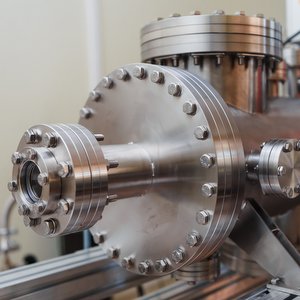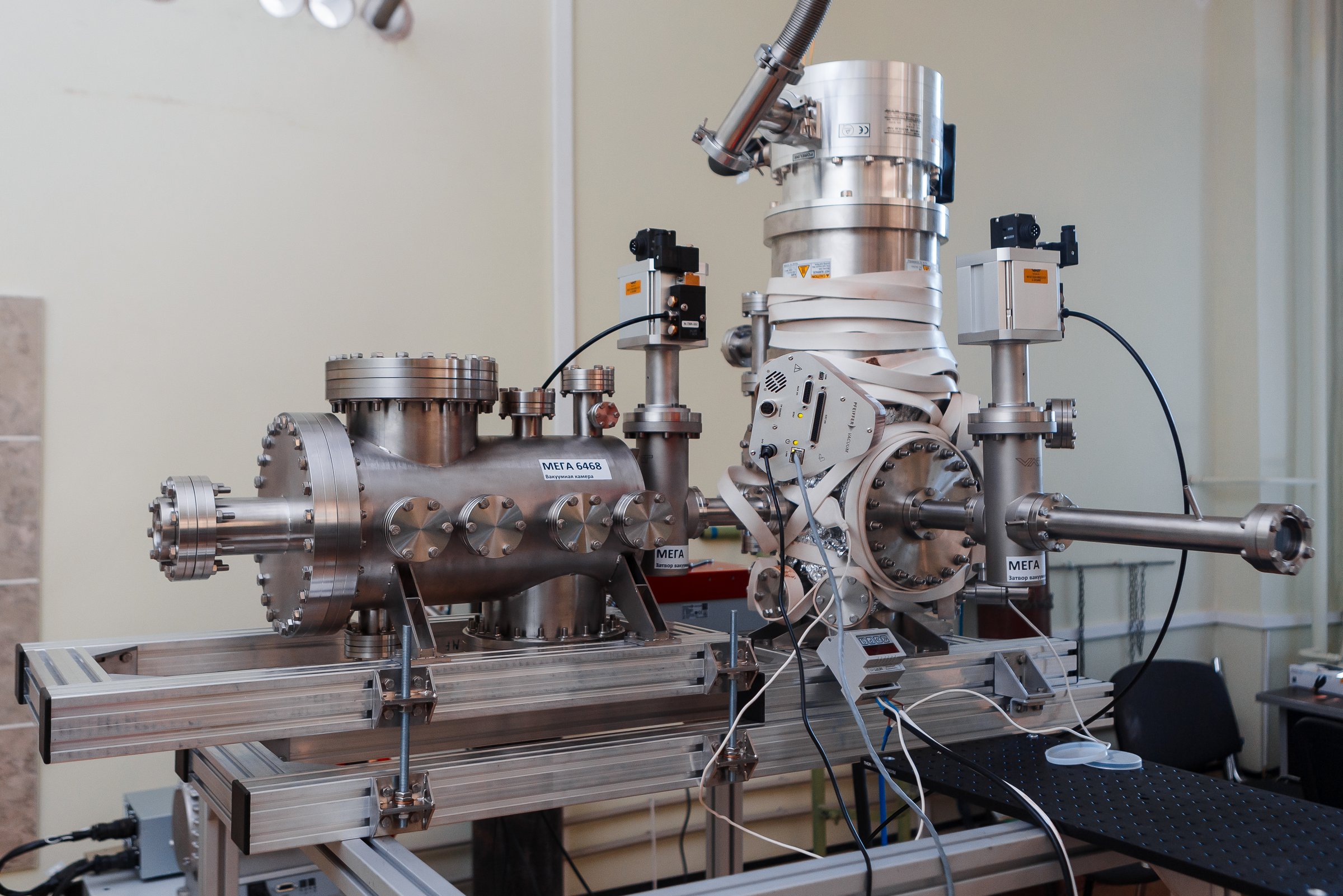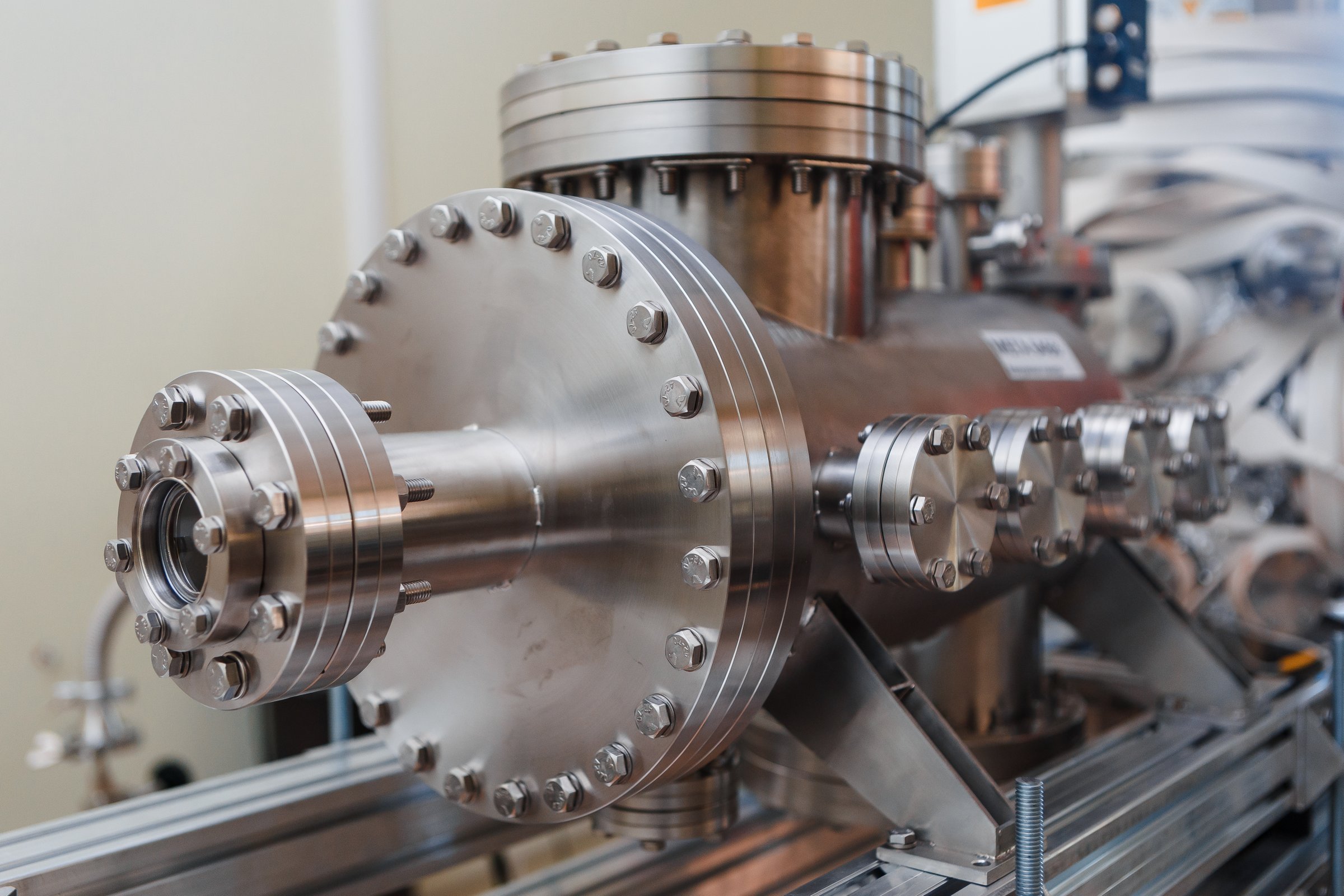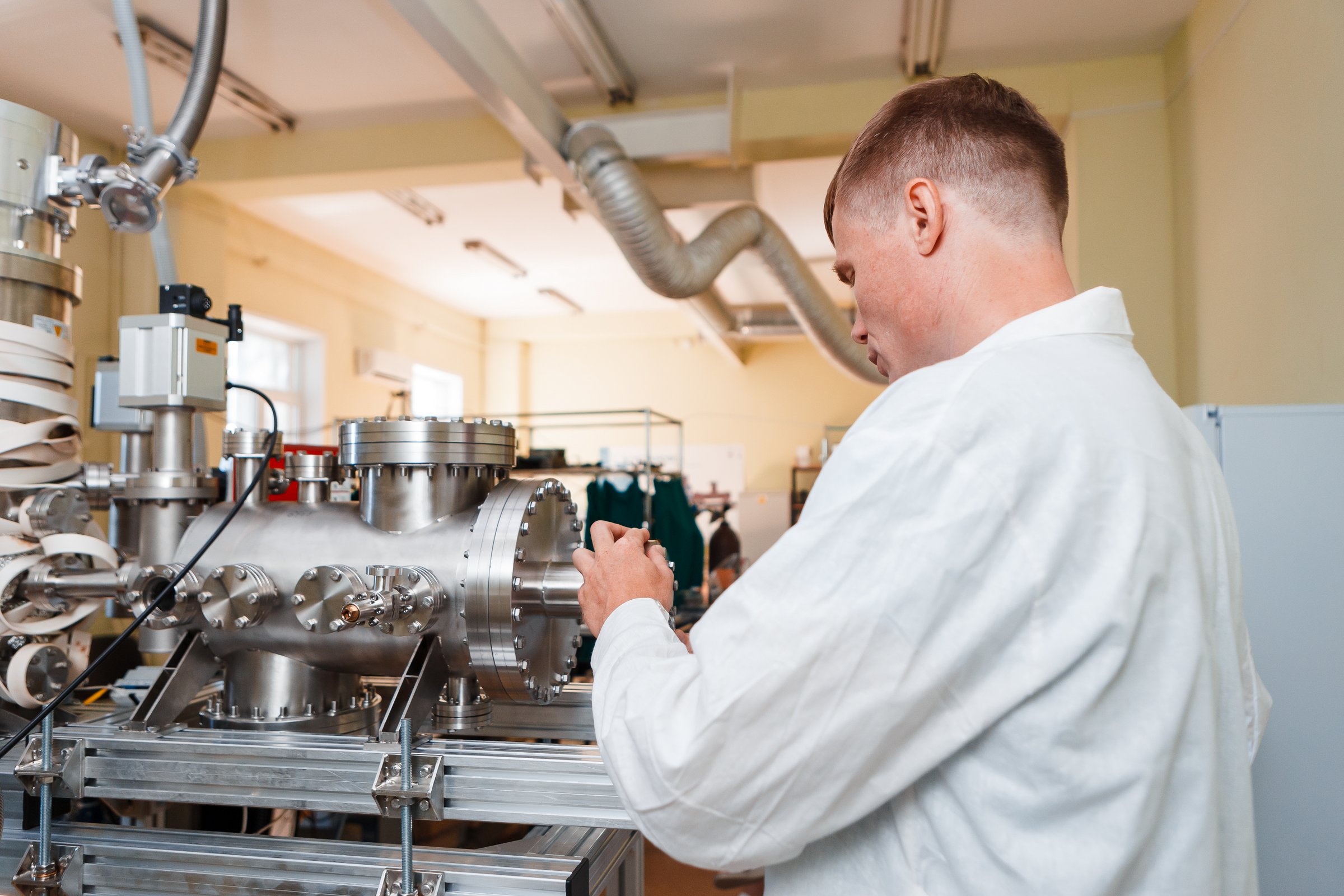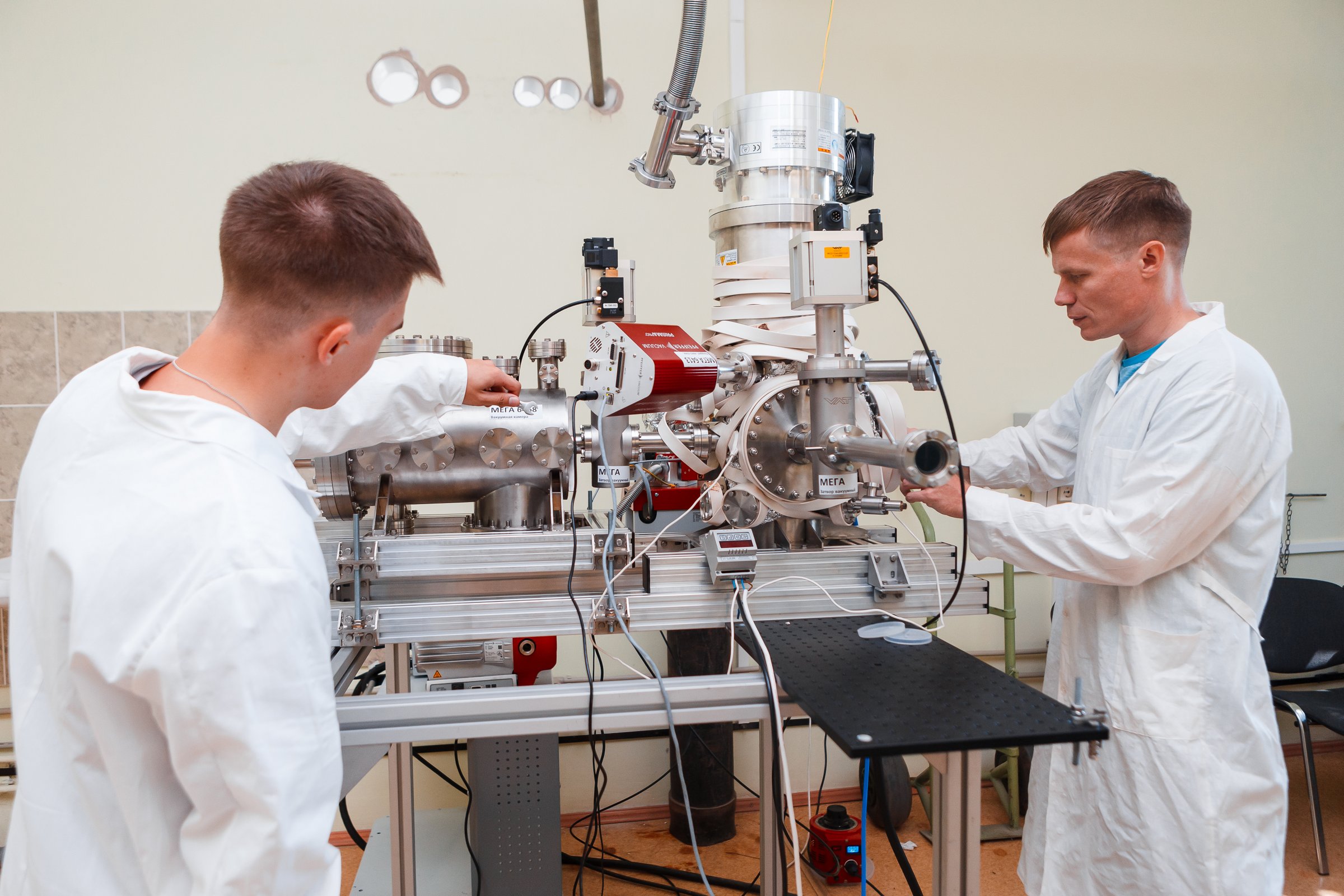This installation will become a key element of the Center for Laboratory Astrophysics of the Samara Branch of the P.N. Lebedev Physical Institute of the Russian Academy of Sciences (SF FIAN). The Center for Astrophysics is established using the Russian Federation Government megagrant "The Origin and Evolution of Organic Molecules in our Galaxy". Work on the assembly of equipment is carried out by scientists of SF FIAN and Samara University. This summer, the main part of the installation was installed – a vacuum chamber for creating an ultra-high vacuum. The final stage of the installation assembly is currently underway.
"The main task of the Center for Laboratory Astrophysics is to study the ways of occurrence of biochemically significant organic compounds in our Galaxy. We study how complex biochemical compounds, such as functionalized aromatic molecules, are formed in space, inside interstellar ice and on the surface of cosmic dust particles. This helps to clarify the chemical evolution of the Solar System and get closer to understanding how life could have originated on Earth. A key element of the Samara Center will be this world-class experimental facility that reproduces deep space conditions and allows modeling the effects of cosmic ionizing radiation on analogues of extraterrestrial ice in a wide range of chemical and physical parameters. The main part of the installation has already been installed – a vacuum chamber for creating an ultra-high vacuum. The assembly is planned to be fully completed this fall, the working launch of the installation and the start of experiments are scheduled for the end of this year," said the Director of SF FIAN, Professor of the Department of Physics of Samara University, Valery Azyazov.
According to the scientist, there is not yet a single laboratory in the world that has all the necessary competencies and capabilities to achieve significant progress in this interdisciplinary activity at the intersection of physics, chemistry, biology and astronomy.
"Although studies of the interaction of ionizing radiation with analogues of interstellar ice have been conducted for almost half a century, the understanding of the synthesis of complex organic molecules in interstellar space is still in its infancy. Previous studies were limited by technical capabilities for conducting experiments and insufficient level of equipment for analyzing the resulting molecules," Valery Azyazov noted.
Inside the installation being created in Samara, it will be possible to reproduce the conditions of various corners of the interstellar medium – from cold molecular clouds to star formation regions. The bulk of the experiments will take place at temperatures from 10 to 50 degrees Kelvin (from -263 to -223 degrees Celsius), although in general the temperature of the experiments can be changed in a wide range from four to 350 degrees Kelvin (from -269 to +76 degrees Celsius). Special pumps will create an ultra-high vacuum inside the main chamber of the installation, thereby eliminating the appearance of any impurities or impurities in the working space.
A tiny silver mirror with an area of only 1 sq. cm is installed in the center of the chamber. During experiments, a thin ice "mantle" with a thickness of several hundred nanometers will form on the mirror with the help of gas condensation nodes – according to scientists, a layer of ice of this thickness covers stardust particles in space. The ice will be of a special composition – created according to real cosmic recipes. In addition to the usual water, various aromatic molecules will also act as ingredients of such extraterrestrial ice – in different percentages for different experiments.
The silver mirror covered with ice will become a target, which during the experiments will be "fired" with beams of particles – photons, electrons and others, just like in real space. Scientific instruments will record and analyze the resulting reaction products. According to calculations, the installation will help "accelerate" the reaction time – for example, ten hours of photon irradiation of an ice target at the installation will be approximately equivalent to 1 million years of photon irradiation of ice in a molecular cloud in space.
According to scientists, during these experiments it will be possible to obtain biologically important molecules and then, for example, it will be possible to understand how the simplest amino acids are formed in space, which can then get to Earth with the help of meteorites. Scientific equipment can also be used to test the radiation strength of promising materials for the skin of spacecraft and satellites.
"The installation will have many sources of various radiation and will be able to show what will happen to a particular substance in space conditions. It is easily adapted to determine the radiation stability of materials and coatings of space probes and lunar stations," said the Director of SF FIAN.
After the launch of the installation, Samara can rightfully be considered a world scientific center of competence in the field of research on the origin of life in the Universe. As previously reported, in 2021 at Samara University in the international research laboratory "Physics and Chemistry of Combustion" within the framework of the megagrant of the Government of the Russian Federation, the world's largest experimental installation was created, which allows to investigate and simulate not only the processes occurring in the combustion chambers of gas turbine engines, but also chemical reactions characteristic of the near-star spaces. As scientists have proved, as a result of these chemical reactions, organic molecules can be synthesized on the surface of stardust formed from polycyclic aromatic hydrocarbons.
"We can say with confidence that thanks to the joint work of the international laboratory "Physics and Chemistry of Combustion" and the Center for Laboratory Astrophysics, Samara will become a world-class scientific competence center in the field of research on the origin of life in the universe," Valery Azyazov summed up.
Photo: Olesya Orina
